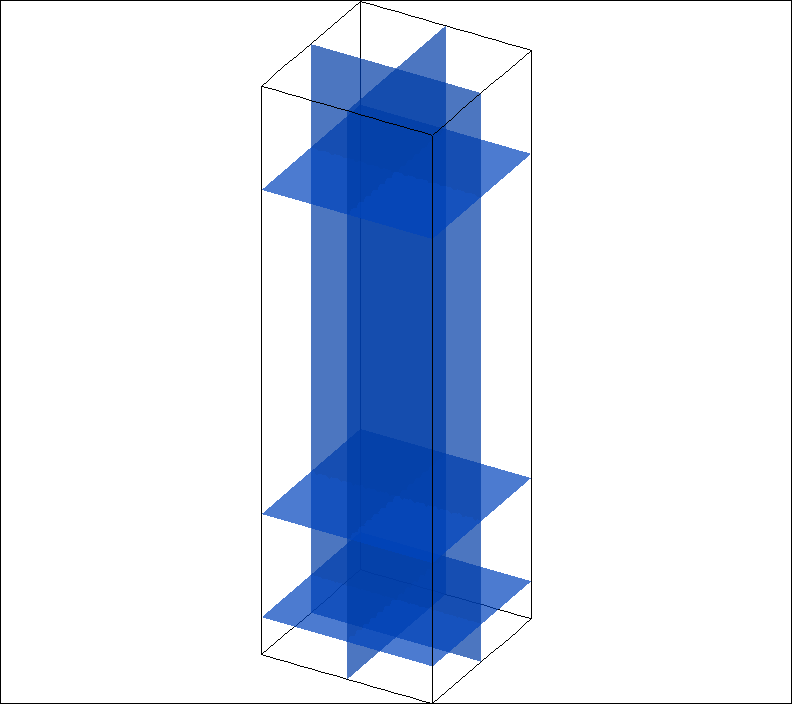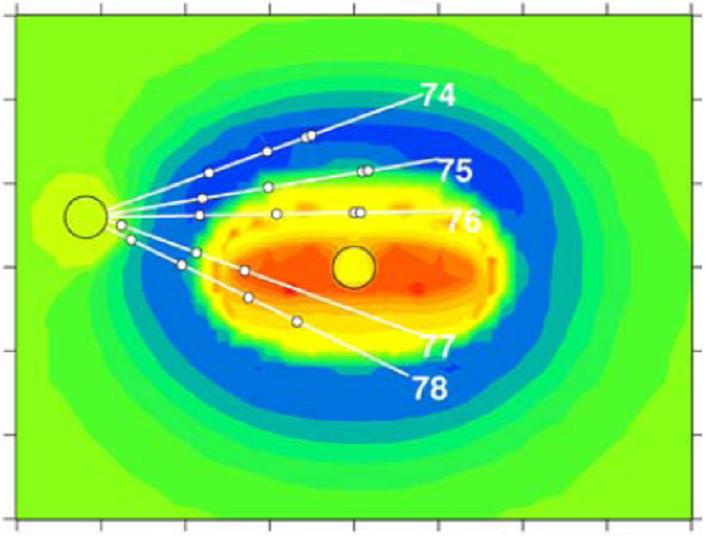Below you will find a quick summary of the TOUGH Software Suite, with links to more detailed information on each:
 TOUGH3 is the basic simulator for nonisothermal multiphase flow in fractured porous media. Although primarily designed for geothermal reservoir studies and high-level nuclear waste isolation, TOUGH3 can be applied to a wider range of problems in heat and moisture transfer, and in the drying of porous materials. The TOUGH3 simulator was developed for problems involving strongly heat-driven flow. To describe these phenomena a multi-phase approach to fluid and heat flow is used, which fully accounts for the movement of gaseous and liquid phases, their transport of latent and sensible heat, and phase transitions between liquid and vapor. TOUGH3 takes account of fluid flow in both liquid and gaseous phases occurring under pressure, viscous, and gravity forces according to Darcy’s law. Interference between the phases is represented by means of relative permeability functions. The code includes Klinkenberg effects and binary diffusion in the gas phase, and capillary and phase adsorption effects for the liquid phase. Heat transport occurs by means of conduction (with thermal conductivity dependent on water saturation), convection, and binary diffusion, which includes both sensible and latent heat.
TOUGH3 is the basic simulator for nonisothermal multiphase flow in fractured porous media. Although primarily designed for geothermal reservoir studies and high-level nuclear waste isolation, TOUGH3 can be applied to a wider range of problems in heat and moisture transfer, and in the drying of porous materials. The TOUGH3 simulator was developed for problems involving strongly heat-driven flow. To describe these phenomena a multi-phase approach to fluid and heat flow is used, which fully accounts for the movement of gaseous and liquid phases, their transport of latent and sensible heat, and phase transitions between liquid and vapor. TOUGH3 takes account of fluid flow in both liquid and gaseous phases occurring under pressure, viscous, and gravity forces according to Darcy’s law. Interference between the phases is represented by means of relative permeability functions. The code includes Klinkenberg effects and binary diffusion in the gas phase, and capillary and phase adsorption effects for the liquid phase. Heat transport occurs by means of conduction (with thermal conductivity dependent on water saturation), convection, and binary diffusion, which includes both sensible and latent heat.
TOUGH3 replaces TOUGH2 in the TOUGH family of codes. TOUGH3 consolidates more than a decade of independent developments of the TOUGH codes by multiple researchers, including the massively parallel version TOUGH2-MP, into a single flagship simulator coded in FORTRAN90 capable of exploiting multi-processor machines. While TOUGH3 has significant coding changes to facilitate parallel execution particularly in parts of the code related to linear equation solution, experienced TOUGH2 users will find familiar subroutine names and FORTRAN code in the subsurface process (e.g., flow, transport, phase equilibria, capillary pressure, etc.) subroutines which remain relatively unchanged from the originals developed by Karsten Pruess and others over the last several decades.
Features & Capabilities | Licensing & Download | Documentation | User Forum
 iTOUGH2 (inverse TOUGH2) is a computer program that provides inverse modeling capabilities for the TOUGH codes. iTOUGH2 solves the inverse problem by automatically calibrating a TOUGH2 model (or any other model) against observed data. Any TOUGH2 input parameter can be estimated based on any observation for which a corresponding TOUGH2 output can be calculated. An objective function measures the difference between the model calculation and the observed data, and a minimization algorithm proposes new parameter sets that iteratively improve the match. Once the best estimate parameter set is identified, iTOUGH2 performs an extensive error analysis, which provides statistical information about residuals, estimation uncertainties, and the ability to discriminate among model alternatives. Furthermore, an uncertainty propagation analysis allows one to quantify prediction errors.
iTOUGH2 (inverse TOUGH2) is a computer program that provides inverse modeling capabilities for the TOUGH codes. iTOUGH2 solves the inverse problem by automatically calibrating a TOUGH2 model (or any other model) against observed data. Any TOUGH2 input parameter can be estimated based on any observation for which a corresponding TOUGH2 output can be calculated. An objective function measures the difference between the model calculation and the observed data, and a minimization algorithm proposes new parameter sets that iteratively improve the match. Once the best estimate parameter set is identified, iTOUGH2 performs an extensive error analysis, which provides statistical information about residuals, estimation uncertainties, and the ability to discriminate among model alternatives. Furthermore, an uncertainty propagation analysis allows one to quantify prediction errors.
iTOUGH2 Web Site | User’s Guide | Sample Problems | Command Reference | Bibliography | Licensing & Ordering | User Forum
 TOUGHREACT is a numerical simulation program for chemically reactive non-isothermal flows of multiphase fluids in porous and fractured media, developed by introducing reactive chemistry into the multiphase flow code TOUGH2. Interactions between mineral assemblages and fluids can occur under local equilibrium or kinetic rates. The gas phase can be chemically active. Precipitation and dissolution reactions can change formation porosity and permeability, and can also modify the unsaturated flow properties of the rock.
TOUGHREACT is a numerical simulation program for chemically reactive non-isothermal flows of multiphase fluids in porous and fractured media, developed by introducing reactive chemistry into the multiphase flow code TOUGH2. Interactions between mineral assemblages and fluids can occur under local equilibrium or kinetic rates. The gas phase can be chemically active. Precipitation and dissolution reactions can change formation porosity and permeability, and can also modify the unsaturated flow properties of the rock.
Features & Capabilities | Licensing & Ordering | Documentation | User Forum
![]() is the result of a re-engineering effort in which the capabilities of TOUGH2 have been recast in a modular design that adheres to the tenets of object-oriented programming as implemented in Fortran 95. New capabilities have been added. I particular, the range of thermodynamic properties of water has been extended to include ice for the modeling of freezing and thawing in permafrost regions, and – specifically – for the simulation of processes in hydrate-bearing sediments, which involve. formation and dissociation of ice-like hydrates with associated changes in porosity, permeability, and two-phase flow characteristics. The first module released in the new framework is TOUGH+Hydrate for the simulation of these processes in hydrate-bearing formations. TOUGH+ maintains backwards compatibility with TOUGH2 input files.
is the result of a re-engineering effort in which the capabilities of TOUGH2 have been recast in a modular design that adheres to the tenets of object-oriented programming as implemented in Fortran 95. New capabilities have been added. I particular, the range of thermodynamic properties of water has been extended to include ice for the modeling of freezing and thawing in permafrost regions, and – specifically – for the simulation of processes in hydrate-bearing sediments, which involve. formation and dissociation of ice-like hydrates with associated changes in porosity, permeability, and two-phase flow characteristics. The first module released in the new framework is TOUGH+Hydrate for the simulation of these processes in hydrate-bearing formations. TOUGH+ maintains backwards compatibility with TOUGH2 input files.
Features & Capabilities | Licensing & Ordering | Documentation | User Forum